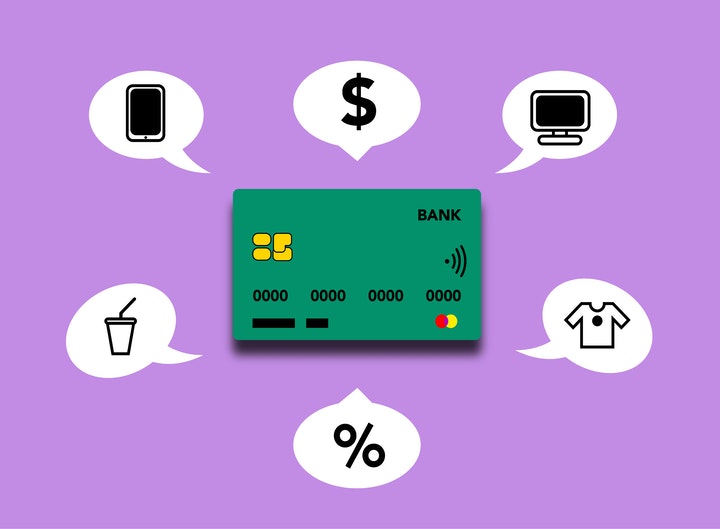Category: Resources
The business world is constantly evolving thanks to new technologies. First, it was the internet, then social media, followed by artificial intelligence, and now we have NFTs (non-fungible tokens).
Non-fungible tokens are becoming more and more popular and for good reason. NFTs are a new way to create, own, and trade digital assets. They’re unique, like cryptocurrency, but unlike crypto, NFTs can represent anything from art to real estate. This makes them perfect for businesses that want to add a new dimension to their products or services.
Have you been thinking about adding NFTs to your business but don’t know where to start? In that case, this blog post is for you! We’ll show you how NFTs can benefit your business and how to get started with them.
What is an NFT (non-fungible token)?


An NFT is a type of cryptocurrency that represents a digital asset. The word non-fungible means that each NFT is unique and can’t be replaced by another NFT. This is unlike cryptocurrency, which is fungible, meaning each unit is interchangeable with another unit.
For example, let’s say you have a digital art piece that you want to sell as an NFT. When someone buys it, they’re buying the unique file that represents the artwork. They own that file and no one else can replace it or copy it.
The greatest benefit of NFTs is that they are stored on a blockchain, which is a decentralized network of computers that keep track of NFT transactions. This guarantees that NFTs can’t be counterfeited or double-spent.
Benefits of NFTs for businesses
Now that you know what NFTs are, let’s look at some of the benefits they offer businesses.
New way to generate revenue – NFTs provide a new way for businesses to generate revenue. If you have a digital product or service, you can now sell it as NFT. For example, companies in the music industry can commercialize their songs as NFTs.
Attract new customers – NFTs also offer a way to attract new customers. By offering NFTs, you can tap into a whole new market of potential customers who are interested in this new technology.
Increased engagement – NFT is one of the hottest topics on social media right now. This gives companies a great opportunity to increase their engagement, as people are paying more attention to NFTs right now.
How can businesses get started with NFTs?


It’s time to move to the most important part of this blog post – how can businesses get started with NFTs? How can they boost their operations with this new technology?
Link physical products with NFTs
One way companies can get started with NFTs is by linking physical products to NFTs. For example, if you are in the clothing industry, you can create NFTs that represent your clothing. Customers can then purchase the NFT and receive the physical product or vice versa – receive an NFT after purchasing a physical product.
In this way, you can create a new source of income and attract NFT enthusiasts to your business.
Proof of authenticity
Another way NFTs can be used by businesses is to provide proof of authenticity. This is especially important for businesses that sell products that are prone to counterfeiting, such as luxury goods.
By selling your products as NFTs, you can provide customers with a digital certificate of authenticity that is stored on the blockchain. This not only ensures that the product is genuine but also shows the full history of the product, from manufacturing to sale, giving customers peace of mind.
Luxury brands are seizing the opportunity to verify the authenticity and provenance of expensive assets. For example, LVHM, a luxury goods manufacturer, is developing blockchain authenticity tracking technology so shoppers can check the history of a high-priced item from anywhere in the world.
Use it as access to your services
NFTs are not only made for physical products but also for digital services. If you offer a digital service, such as online courses, NFTs can be used to give customers access to your content.
How could this work? Holders of your NFT could unlock and view your exclusive content or use your services by connecting their crypto wallets to your website and proving that they own the NFT.
This is a great way to increase customer loyalty and engagement, as well as prevent content piracy. Consider how much money Netflix and other US streaming video services lose each year because of password sharing ($6 billion a year, to be exact). NFTs might be the answer to this problem.
Supply Chain Management
NFTs can also be used for the supply chain management. By tracking your products on the blockchain, you can provide customers with a transparent view of your product’s journey, from manufacturing to delivery.
This is not only good for customer relations but can also help you track and manage your inventory more effectively. NFTs can help businesses save time and money by streamlining their supply chain.
Fundraising for expansion
Are you planning to expand your business and wondering how to raise the necessary funds? Before you go to the bank or approach investors, consider NFTs. NFTs can be used to raise funds for business expansion.
One way to do this is by selling NFTs that represent shares in your company. This is similar to how traditional companies sell shares on the stock market; however, instead of selling paper certificates, you would be selling NFTs.
By selling NFTs, you can attract a whole new group of investors who are interested in this new technology.
Conclusion
NFTs are a hot topic right now and offer businesses a great opportunity to increase their engagement and attract new customers. NFTs can be used in various ways, such as providing proof of authenticity, linking physical products with NFTs, or selling NFTs that represent shares in your company. NFTs offer a great way for businesses to streamline their operations and save time and money.
Are you considering using NFTs for your business but don’t know where to start? You are not alone. NFTs are a new technology, and there are not many resources available.
But don’t worry, we can help you. We offer complete blockchain services, from NFTs to smart contracts. We have a team of experts who can help you get started with NFTs and take your business to the next level. Contact us today for a free consultation to learn more.
Request a free consultation
The web is constantly evolving, and with each new iteration comes new opportunities for businesses. Web 3 is the latest stage in this evolution, and it offers a number of advantages for companies that are able to harness its power.
If you’re like most business owners, you’re always looking for ways to stay ahead of the curve. You understand the importance of being an early adopter and know that being late to the game can have a serious impact on your results.
That’s why it’s so important to stay abreast of the latest web developments and to make sure that your business is prepared to take advantage of them.
Let’s take a look at how web 3.0 can impact your business and how to be an early adopter of this game-changing technology.
What is web 3.0?


To understand web 3.0, we must first understand its predecessors – web 1.0 and web 2.0.
Web 1.0
Web 1.0 was the first version of the web and was primarily used to exchange information. In this version, data storage and management are handled by a single computer system without real-time communication between computers. The websites are static, and users can only view the information that is provided to them.
Web 2.0
Web situation began to change with web 2.0 by introducing dynamic web pages. In this version, users are able to interact with the web content and each other in real-time. This interaction is made possible by a number of web technologies such as social networking, blogs, wikis, and video sharing.
Web 3.0
Web 3.0 takes things one step further by adding intelligence to the web. Although it has not yet been fully realized, experts believe that web 3.0 will be the Semantic Web.
The Semantic Web is a web of data that can be processed by machines. This would allow computers to understand the meaning of the information on the web and make decisions based on that information.
In this version, web-based will be able to learn and understand the needs of users. This understanding is made possible by the use of artificial intelligence (AI) and machine learning algorithms. The result is a web that is more personalized and tailored to the needs of each individual user.
What does web 3.0 mean for businesses?
The opportunities presented by web 3.0 for companies are enormous. Let’s explore some of the ways your business can benefit from this new web technology.
Improved transparency and trust


Web 3.0 technologies can help to improve transparency and trust between businesses and their customers. The use of blockchain technology, for example, can help to create a tamper-proof record of transactions. This would allow businesses to build more trust with their customers by providing them with a transparent view of their business dealings.
A business could use blockchain to provide customers with a real-time view of their supply chain. Thanks to this, customers can see where their products are at each stage of the production process and be sure that they get what they paid for.
Increased security
Nothing is more important to a business than the security of its data. Web 3.0 technologies can help to improve the security of your data by decentralizing it.
In a centralized system, all your data is stored in one location. This makes it vulnerable to attack. In a decentralized system, your data is spread across a secure ledger. This makes it much more difficult for hackers to access and manipulate your data.
Affordable infrastructure
The infrastructure required to run a web 3.0 application is much cheaper than the traditional web infrastructure. This is because web 3.0 applications are decentralized.
They do not require expensive servers and data centers. Instead, they can be run on a network of computers provided by volunteers. This makes web 3.0 applications much more affordable to develop and maintain.
Improved user experience
Web 3.0 technologies can help to improve the user experience by providing a more personalized web. The use of AI and machine learning algorithms can help to provide each user with a unique experience that is tailored to their needs.
The result is a web that is more user-friendly and easy to use. This can lead to increased customer satisfaction and loyalty.
More customer insight


The use of web 3.0 technologies can also help businesses to gain more insight into their customers. How?
Arguably, with Web 3.0, businesses can provide businesses with more data about their customers without violating their privacy. This is because web 3.0 technologies can help to anonymize data.
This means that businesses can collect data about their customers without them having to provide any personal information. This data can then be used to improve the products and services that businesses offer.
Better data searchability
Businesses can also use web 3.0 technologies to make their data more searchable. The use of semantic web technologies can help to create a web of data that can be easily searched by machines.
This would allow businesses to find the information they need quickly and easily, eliminating the need to conduct manual data searches as well as wasting money and resources.
Saying goodbye to third-party intermediaries
Business owners know how costly and time-consuming it can be to deal with third-party intermediaries. But we’ve got some good news. With web 3.0, businesses can conduct transactions directly with their customers, without the need for a middleman.
What does this mean? This means businesses can save money on transaction fees, as well as get their products and services to market faster, ultimately building stronger relationships with their customers.
How to prepare for web 3.0


Now that we’ve discussed some of the ways web 3.0 can impact businesses, you might be wondering how you can prepare for it if it’s still in its early stages of development.
Here are a few things you can do to get started:
Educate yourself about the web 3.0 technologies – This blog may be your first step, but there is much more you can learn. If you want to stay ahead of the curve, it’s important to educate yourself and your team about web 3.0 technologies and how they work.
Monitor web 3.0 developments – By keeping an eye on web 3.0 developments, you’ll be able to better understand how the technology is evolving and how it can be used to benefit your business.
Learn more about blockchain – Blockchain is one of the key technologies that make web 3.0 possible. If you want to get ahead of the game, it’s important to learn more about how blockchain works and how it can be used to benefit your business.
Start experimenting with web 3.0 technologies – While web 3.0 is still in its early stages, there are already some solutions like smart contracts that businesses can experiment with.
Conclusion
Web 3.0 has the potential to revolutionize the way businesses operate. By providing a more personalized web, improved data searchability, and the elimination of third-party intermediaries, web 3.0 can help businesses save time and money while building stronger relationships with their customers.
This can serve as a primer for business owners who want to stay ahead of the curve and be prepared for web 3.0. But remember, web 3.0 is still in its early stages, so don’t expect everything to happen overnight. Just keep an eye on web 3.0 developments, educate yourself and your team about the technology, and start experimenting with web 3.0 solutions. Doing so will put you in a good position to take advantage of web 3.0 when it matures.
Do you want to know more about the 3.0 web solutions that can benefit your business? Our team already offers services such as smart contract development, IoT or artificial intelligence services, so feel free to contact us and we’ll be happy to chat.
In January 2009, an anonymous person or group of persons created a decentralized currency called Bitcoin that used underlying blockchain technology. Bitcoin enabled secure peer-to-peer transactions without the need for a third party, such as a bank, to monitor them.
Who would have thought that in a matter of decades this technology would have given rise to even more revolutionary applications?
Fast forward to today, and smart contracts are the next big thing in the world of blockchain and not only. Due to the advantages that they offer, smart contracts are being applied in a variety of industries.
But what exactly are smart contracts and why are many companies turning to them? That is exactly what we will discuss in this article.
What are smart contracts?


A smart contract is a digital protocol that facilitates, verifies or enforces the negotiation or performance of a contract. To put it in simpler terms, smart contracts are computer programs that automatically execute the terms of a contract.
These contracts are stored on a blockchain, which is a distributed database that contains a growing list of records, called blocks. Each block is linked to the previous one and contains a timestamp and transaction data.
What differentiates smart contracts from the traditional contracts that we are used to is the fact that smart contracts are self-executing. This means that once the conditions of the contract are met, the smart contract will automatically execute the predetermined actions.
For example, let’s say that a company enters into a smart contract with a supplier to purchase 100 widgets. The smart contract will automatically place the order with the supplier and once the widgets are delivered, it will release the payment to the supplier.
This makes smart contracts a more efficient and secure way to conduct transactions.
How do smart contracts work?
The above example sounds great in theory, but how do smart contracts actually work?
To write a smart contract, a developer needs to use a programming language called Solidity. Once the smart contract is written, it is uploaded to the blockchain.
From there, it can be accessed by anyone who has an internet connection. The contract will be stored on a decentralized network of computers and will be tampered-proof.
Once the smart contract is uploaded, the parties need to sign it with their digital signatures. After that, the smart contract is considered binding and can be executed automatically.
Advantages of smart contracts
The above content gave you a good idea of what smart contracts are and how they work with a glimpse of their advantages, but smart contracts are much more than that. Let’s take a deeper look at the benefits that smart contracts can offer businesses.
Security


One of the main advantages of smart contracts is that they are more secure than traditional contracts. Smart contracts are stored on a blockchain, which is a decentralized and tamper-proof network. This makes it impossible for someone to change or delete the smart contract.
In addition, smart contracts are executed automatically, which means that there is no room for human error.
Speed and efficiency
Another great advantage of smart contracts is that they are faster and more efficient than traditional contracts. With smart contracts, there is no need for a third party, such as a bank, to verify or execute the contract. This saves a lot of time and hassle.
Storage & Backup
Smart contracts record all data related to a transaction on the blockchain. This data is immutable, meaning it cannot be changed or deleted. This provides businesses with a secure way to store data related to their transactions. Since smart contracts are stored on a blockchain, they are also backed up on every node on the network. This makes smart contracts a secure and reliable way in case of data loss.
Transparency
As we already mentioned, smart contracts are stored on a decentralized network. This means that anyone with an internet connection can see the smart contract. This transparency helps build trust between the parties involved in a smart contract, such as with customers and business partners.
Smart contract use cases
All these advantages make smart contracts a great tool for companies. Use cases can differ from industry to industry and company to company. So, let’s take a look at some of the most common smart contract use cases.
Digital identity


The importance of digital identity has been increasing in recent years and smart contracts can play a big role in this. Smart contracts can be used to store digital identity data, such as biometric data, in a secure and tamper-proof way.
This data can then be used for KYC (know your customer) processes or for authentication purposes.
Automated billing
Another great smart contract use case is automated billing. Smart contracts can be used to automate the invoicing process. This can save a lot of time, as businesses no longer need to send invoices manually.
In addition, smart contracts can also be used to automatically release payments once an invoice is paid. This makes the whole process more efficient and secure.
For example, a store that sells products online can use a smart contract to automatically send an invoice to the customer once the order is placed. The smart contract can also be configured to release the payment to the store once the invoice is paid.
Supply chain management
Smart contracts can be used to streamline supply chain management. For example, smart contracts can be used to track the movement of goods and to automatically trigger payments. This can help businesses save a lot of time and money.
Asset management
Another common smart contract use case is asset management. Smart contracts can be used to store and track ownership of assets, such as land or property. This can help businesses save time and money on paperwork. It can also help prevent fraud.
Industries that can benefit


Now that we’ve seen some of the most common smart contract use cases, let’s take a look at which industries can benefit from smart contracts.
Smart contracts can be used in any industry where there is a need for secure and efficient contract management. However, smart contracts are particularly well suited for the following industries:
Banking and financial services – Smart contracts and blockchain technologies can disrupt the banking and financial services industry by providing a more secure and efficient way to manage contracts. For example, smart contracts can be used for KYC processes, automated billing, and asset management.
Insurance – Smart contracts are one of the greatest way for insurance companies to streamline their operations. Automating the claims process, for example, can help insurance companies save a lot of time and money.
Healthcare – Healthcare is becoming one of the most innovative industries when it comes to the adoption of new technologies. Smart contracts can help streamline many processes in the healthcare industry, from patient data management to claims processing.
Real Estate – When it comes to documents and records, the real estate industry is notoriously paper-heavy, creating some awkwardness for all parties involved in a transaction. Smart contracts can help streamline many of the processes involved in buying and selling property, from title transfers to mortgage approvals and rental agreements.
Supply Chain Management – In supply chain management, smart contracts can serve as a vital element by automatically recording the transfer of goods, ensuring that all operations are carried out as planned, obligations are met, and much of the paperwork is eliminated.
Government – Some may be surprised to hear that government agencies can also use smart contracts. However, many government services can be automated using smart contracts. For example, smart contracts can be used for identity management, land registration, and tax collection. All of this can help government agencies save time and money, and for citizens, it can mean more efficient and streamlined services that don’t cause as much frustration.
Conclusion
As we already understand, Smart contracts are important because they represent a new way of doing business that is more efficient and secure. They can be used to automate many processes, which can save time and money for businesses. In addition, smart contracts are based on blockchain technology, which is a secure and tamper-proof distributed ledger.
This makes them ideal for businesses that need to store and manage sensitive data. All of this makes smart contracts a very powerful tool that can be used in a variety of industries. If you think your business could benefit from smart contracts, then it’s definitely worth exploring further.
Looking for a way to streamline your business operations with smart contracts? Contact us today for a free consultation and we’ll be happy to help you get started.
Blockchain technology is one of the most disruptive technologies in recent years. It has the potential to revolutionize a wide range of industries, from finance to healthcare to manufacturing.
Blockchain has seen a lot of changes over the past few years, but the upcoming trends are a good indicator to know that this technology will be more advanced than ever. In 2022, we can expect to see even more innovative applications of the technology as businesses and organizations continue to explore its potential. Here are some of the most exciting blockchain trends we can expect in the next few years.
What is Blockchain technology?


Blockchain is a distributed database that allows for secure, transparent and tamper-proof transactions. It was first proposed by an anonymous person or group of people under the name Satoshi Nakamoto in 2008. The technology is used to create digital currencies like Bitcoin and Ethereum. However, that is not all it can be used for. The digital ledge has the potential to revolutionize many different industries by providing a secure and transparent way to conduct transactions.
How does the blockchain work?
As we mentioned, blockchain technology is best known for its use in Bitcoin and other cryptocurrencies, but the technology has many other potential applications.
When a transaction is made on the digital ledger, it is verified by a network of computers. These computers are known as “miners” and they use their processing power to verify transactions. Once a transaction is verified, it is added to a block.
This process guarantees a decentralized and secure system, as there is no central authority that can manipulate the data. This is the main reason why blockchain is often seen as a game-changer for many industries.
Benefits of Blockchain technology
Blockchain technology has a variety of benefits that include:
- Increased security: Blockchain is the perfect system to keep your data safe because it is decentralized. There is no central authority that can hack this database and alter the information, making you even more protected than before.
- Transparency: Such technology allows for transparency and accountability because all transactions are verified and recorded by multiple computers . This makes it easy to track information and prevents data tampering.
- Efficiency: When it comes to efficiency, blockchain is a surefire winner. Not only can the technology streamline processes and increase your productivity but also because there’s no need for third-party intermediaries in these instances.
- Cost savings: With a digital ledger, companies can track and share data in ways that are faster (less time spent on processing) and cheaper (no middlemen). Blockchain-based currencies like Bitcoin have proven the viability of paying online without going through banks or payment intermediaries which take an average 25% commission fee per transaction.
- Fraud prevention: Blockchain technology is set up in a way that prevents fraud. By recording every transaction that takes place on the blockchain, it creates an audit trail that can be traced back to the original input. This makes it difficult for criminals to commit fraud because since the system is decentralized, there is no one single point of failure that hackers could target in order to exploit it.
2022 Blockchain Trends in Business


Now that we’ve answered the question, “What is Blockchain Technology?” it’s time to take a closer look at some of its trends in business that we can expect to see in 2022.
Further popularization of digital currencies
Blockchain technology has already disrupted the financial industry by enabling the use of digital currencies like Bitcoin.
When this concept was first introduced, it was met with a lot of skepticism, but today we see countries like El Salvador making Bitcoin its official currency. Or China working on its own digital currency.
This is just the beginning of a larger trend that will see digital currencies becoming more and more popular in the years to come.
The rise of decentralized applications (dApps)
As we mentioned earlier, the technology can be used for various purposes other than cryptocurrencies. One of these applications is decentralized applications or dApps. These are applications that run on a decentralized network of computers rather than a single server.
This makes them more secure and efficient, as there is no central point of failure. For example, PancakeSwap, Axie Infinity and Katana are all examples of famous dApps that are currently in use.
We can expect to see more and more dApps being developed in the years to come as businesses start to realize the benefits they offer.
Increased use of smart contracts
Smart contracts are another application of blockchain technology that is seeing increasing use. These are contracts that are executed automatically when the terms of the contract are met.
This eliminates the need for third-party intermediaries, as the execution of the contract is handled by the blockchain network itself. This not only speeds up the process but also reduces costs.
It can be used for a variety of purposes, such as real estate transactions, supply chain management, payment processing, and more.
The rise of Metaverse


Metaverse is a decentralized virtual world that runs on blockchain technology. Although it is a relatively new venture, it has a lot of potential and is quickly gaining popularity.
In Metaverse, users will be able to create avatars, buy virtual land, and even create their own digital assets.
What’s more, some Metaverse platforms have their own decentralized exchange, which will allow users to trade these digital assets with each other. This could potentially revolutionize the way we interact with each other online.
For businesses, Metaverse presents a unique opportunity to create and promote their own digital assets. And for consumers, it provides a fun and convenient way to interact with others online.
NFTs increasing in popularity
NFTs, or non-fungible tokens, are digital assets that are stored on the blockchain. Unlike Bitcoin or other cryptocurrencies, which are interchangeable, each NFT is unique and cannot be replaced by another.
This makes them ideal for storing items of value that need to be authenticated, such as artworks, collectibles, and vouchers.
The popularity of NFTs is increasing rapidly, as businesses and consumers alike begin to see the benefits they offer.
Many NFT creators went from seeing it as a project to seeing it as a company. That’s why, some NFTs now have a real roadmap with time-related goals, full-scale team members, and partnerships with other companies.
Blockchain and IoT integration
One of the most exciting possibilities for blockchain technology is its integration with IoT or the internet of things. This is the network of devices that are connected to the internet and can communicate with each other.
By combining blockchain technology with IoT, we can create a secure system in which devices can interact with each other without the need for a third party. This could have a huge impact on many industries, including healthcare and logistics.
Blockchain and AI integration
Artificial intelligence (AI) is a process of programming computers to make decisions for themselves. Blockchain is a digital ledger that records and stores all online transactions.
The potential for blockchain and AI integration is significant. Part of the AI decision-making process remains a black box for investigators. It could be used to verify and track the AI decision-making process, providing transparency and a peek into the “black box”.
What industries will be most disrupted by blockchain in 2022?


The use cases for blockchain are endless, and it is likely that many industries will be disrupted by it in the years to come. Here are a few of the most likely candidates:
- Finance: Blockchain has the potential to revolutionize the way we do banking and payments. It could also help reduce fraudulent activities by providing a secure and transparent way to record transactions.
- Healthcare: Blockchain could be used to securely store and share patient medical records. It could also be used to track the movement of pharmaceuticals through the supply chain.
- Supply Chain Management: It could be used to track the movement of goods through the supply chain. This would improve transparency and efficiency while also reducing the risk of fraud.
- The retail sector: Blockchain could be used to track the movement of goods and manage inventory. This would improve stock management and reduce the chances of out-of-stock items. Likewise, NFTs could be used to track the provenance of luxury items and ensure that they are not counterfeit.
- Education: Blockchain could be used to store academic records securely and provide proof of authenticity. This would make it difficult for people to forge their qualifications.
Conclusion
Blockchain is a very versatile technology with the potential to disrupt a wide range of industries. In the coming years, we can expect to see more businesses and consumers using this technology in their everyday lives.
The trends we mentioned are just a glimpse into the potential of blockchain technology. There are many other exciting possibilities that we have not yet explored. We can only wait and see what the future holds for this incredible technology.
Do you want to take advantage of blockchain technology and its potential? Our team is here to help. We have the experience and expertise to help you navigate the world of blockchain. Schedule a free consultation today to learn more about how we can help you.
How to Outsource Programming
A new year has begun, however, the trend of outsourcing programming and IT work still remains on the rise.
Since the business climate is becoming increasingly competitive companies are searching for better and more efficient ways to get their work done, and oftentimes, this includes outsourcing certain tasks or projects to a third party.
Programming is no exception; in fact, it is one of the most commonly outsourced services.
If you have never outsourced software development before, you might be wondering where to start, how to choose a reliable partner, or what mistakes you should avoid.
If that’s the case, we are here to help! This blog post covers everything you need to know about how to outsource programming in 2022.
What is programming outsourcing?
Programming outsourcing is a business practice of assigning IT-related tasks to a third party. It means that companies hire external developers and give them certain projects or tasks to complete instead of using the services of their in-house team.
Software outsourcing can be used for short-term or long-term assignments, depending on the company’s needs and requirements. It is a common practice among small and medium-sized businesses, as it helps them increase productivity, reduce costs, and get their work done faster.
2022 IT outsourcing trends


Before we get into the details of how to outsource your programming in 2022, let’s take a quick look at some of the IT outsourcing trends that are expected to dominate this year.
Remote work is becoming increasingly popular
Due to recent developments, more and more people are working from home. This is good news for those looking to outsource their programming as they can hire developers based anywhere in the world! Thanks to this trend, companies now have access to a global talent pool and can find the best programmers for their projects.
Cloud computing continues to grow
Cloud services have been around for a while now, and they continue gaining popularity among businesses of all sizes. In 2022, the cloud system infrastructure services (IaaS) market is expected to grow by 26% compared to 2021.
More and more IT companies are switching from on-premise software to cloud-based services, and this is expected to continue in 2022.
The rise of AI
Artificial intelligence (AI) is gradually becoming more popular and widespread among businesses, and this is expected to continue in 2022.
This innovative technology can be used in a number of different ways and can be the deciding factor between success and failure for businesses seeking to compete in today’s competitive landscape. That’s why more and more outsourcing companies are offering AI services.
More focus on big data and data analytics
You can’t have AI without big data, and it’s no surprise that these two technologies are closely related. Outsourcing companies are starting to provide more big data services as demand increases and businesses begin adopting new technology at an accelerated rate in order to stay relevant and competitive on the market.
Blockchain services are more in demand
Due to the increased popularity of cryptocurrencies and other digital assets, more businesses are incorporating blockchain technology into their systems. Software outsourcing companies are starting to provide dedicated developers who specialize in this field because the demand for such services is growing rapidly.
Cybersecurity is more important than ever
Technologies advance but so do the methods used by cybercriminals to exploit them. As we have seen in the past, cybersecurity breaches can be very costly for businesses. In fact, they can even lead to the demise of a company.
This is why businesses are increasingly turning to cybersecurity services in order to protect their systems and data from potential attacks. Programming outsourcing companies are starting to offer these services as well, so be sure to ask about them when you’re looking for a vendor.
Steps for outsourcing your programming


Now that we’ve looked at some of the IT outsourcing trends that are expected to dominate this year, let’s take a look at the steps you need to take in order to outsource your programming.
Step 1: Define your needs and requirements
The first step is to clearly define your needs and requirements. What kind of programmer(s) do you need? What type of programming language is required for this job?
IT outsourcing companies provide a wide range of services, so it’s important to know exactly what type of help you’re looking for before contacting them.
This step might even help you realize that you don’t need to outsource your programming at all and can instead find a software developer that can meet your needs in-house.
Step 2: Decide on the outsourcing location
There are many different options when it comes to choosing where to look for a software outsourcing partner. Location is very important as it will directly affect the cost of your project, communication, and the overall quality of your service.
IT outsourcing companies are located all over the world, but the region that is gaining the most popularity for this type of service is Eastern Europe.
Read our comprehensive guide on choosing the right location and find out why we advise Georgia as the best option for IT outsourcing.
Step three: Make a list of potential partners
Great, so you now know what you’re looking for and where to find it. The next step is to compile a list of potential partners from that specific country. This can be done by conducting a simple Google search, reading online reviews, investigating previous projects, or asking for referrals from friends or colleagues.
Don’t just settle for the first programming outsourcing company you find. Take your time and do some research in order to make sure that the vendor will meet all of your requirements before contacting them directly with an inquiry about their services.
Clutch can be a good resource for finding all of the above-mentioned information about potential partners.
Step four: Interview potential partners
Make sure you contact more than one programming outsourcing company and set up interviews with each of them. This will give you a chance to ask questions, get a feel for their culture, and see if they’re a good fit for your project.
Some things you may want to ask during these interviews include:
- The company’s experience in the type of programming you need;
- Programming languages they are familiar with;
- Their rates and project quotes ;
- The company’s policies on quality assurance, deadlines, and changes/updates to the project plan.
Also, pay attention to what your potential partners will focus on during the interview. Will they really be interested in your business and what you’re trying to accomplish, or are they just trying to sell you their services?
The ones that will ask the most questions are usually more interested in helping you achieve your goals and finding out how they can best assist with that process than just getting another project under their belt.
Companies that seem eager to talk about themselves without asking much about what exactly it is you need them for should be avoided at all costs!
Step five: Choose the right partner and discuss the final details
After narrowing down your options, it’s time to choose a programming outsourcing company that you feel comfortable with. Don’t rush into anything and make sure all of the terms are clear before signing any contracts!
Clarify all of the following details before you start working with them:
- Scope of work (what exactly will they do for you?), budget and timeline;
- Expected output from their side, as well as what will be expected from your staff;
- Communication plan- how often should meetings take place? Who needs to be involved in those meetings and who should attend? Will there be regular reports or updates on progress made by both parties involved?
- Terms of payment – how much money will they charge you upfront, when do they expect to receive it and what happens if something goes wrong during the project timeframe (e.g., if there’s a change in plans)?
- Security and confidentiality- what assurances can they give you that your intellectual property will be protected?
- Termination clause (in case one party decides to end the partnership)- what happens if either side wants out before completion of the project?
These are just a few of the things you’ll need to iron out before starting any project, but they’re essential in order to avoid any misunderstandings or disputes further down the line.
To make sure nothing gets past your attention, we’ve put together a comprehensive checklist of crucial questions to ask before hiring a software outsourcing partner.
Step six: Monitor the work as it happens
Once everything has been agreed and organized, is there nothing left but to sit back and let your programming outsourcing team work their magic? Not so fast!
Even if you’ve hired the best of the best, it’s important to keep an eye on their work as it progresses. This doesn’t mean hovering over them and micromanaging every little thing they do, but rather being available when needed and asking for regular reports so that you’re always in the loop.
This will help you catch any potential problems early on and ensure that the project is completed on time, within budget and to your exact specifications.
Regardless of the experience and track record of your outsourcing partner, a little vigilance on your part will help guarantee that the end result is everything you hoped for.
How to manage remote programmers


With regards to our last point, it’s important to realize that effective management of remote programmers is essential for successful outsourcing.
When you’re working with a team on the other side of the world and they don’t report directly to you, things get more complicated because there are so many different factors involved – cultural differences between countries as well as time zones being just two examples.
That’s why it’s important to have a certain strategy in place for managing remote programmers. Let’s take a look at some tips:
- Establish clear lines of communication – this includes everything from setting up regular meetings to ensuring that all team members have access to the same communication tools (like Slack, for example).
- Create a set of standards – having clearly defined guidelines for how work is done will help avoid any misunderstandings or conflicts down the line.
- Encourage team bonding – even though they’re not in the same room, it’s still important to foster a sense of team spirit among your remote programmers. This can be done through things like shared social media accounts or regular video conferences.
- Make sure you have the right tools – without the proper tools, managing remote programmers can quickly become overwhelming and inefficient. That’s why it’s essential to make sure that everyone has access to the right tools, such as Slack for communication or Trello for managing projects. This will ensure that your team is always on top of their work without having too much overhead from administrative tasks like sending emails back and forth all day long!
- Regularly assess progress – by checking in on your team’s progress on a regular basis, you can catch any potential problems before they become too difficult to manage.
If you want a more detailed look at how to manage remote programmers, we’ve put together an in-depth guide that goes into everything from time management tips for working with a global team to the best tools and resources available online today.
Benefits of outsourcing your programming
We covered some of the basics and best practices for outsourcing your programming in this article, but before we wrap things up, let’s take a quick look at some of the benefits of doing so and why it’s worth considering this option when hiring a development team.
- Increased efficiency – by outsourcing to a team that specializes in programming, you can quickly and easily get tasks completed that may have been difficult or impossible to do on your own or with an in-house team.
- Reduced costs – not only will you save money on hiring new employees, but also potentially reduce other expenses since they won’t need office space or equipment. Additionally, outsourced teams are often able to work for less than what it would cost you to hire someone locally.
- Increased flexibility – one of the biggest advantages of outsourcing your programming is that there are no long-term commitments or contracts required; instead, clients pay only when they need a developer’s help with something specific. This allows them to scale up and down their project teams as needed without having to worry about paying for unused time or resources.
- Access to experts – programmers are scarce resources, and often the best ones are already taken. By outsourcing your programming , you have access to a team of experts who can help with everything from developing new applications to maintaining existing ones.
- Ability to focus more time and energy on your core business – outsourcing Programming allows you to focus less effort toward these tasks so that it can be channeled into building up your company and expanding your customer base.
Outsourcing Programming can be a great way to get tasks completed quickly and efficiently, while freeing up time and energy for you to focus on other aspects of your business.
This was a quick rundown of the benefits, but if you’d like more in-depth information, check out our detailed article on why companies prefer outsourcing agencies over individual contractors.
When to outsource programming
Did we convince you? Programming outsourcing is a great option for many companies, but it’s not right in every situation. The best way to determine if Programming outsourcing is right for your business is by asking yourself these questions:
- Do I have enough work that requires outsourcing? If you’re going through periods where there isn’t much programming work required, then hiring an outsourcing firm isn’t going to be cost-effective. However, it could still make sense if your company is in need of programming but not enough to justify hiring full-time employees.
- Is there a team available within my budget? If local talents are out of reach financially for your company, outsourcing may be a good option. Just make sure to do your research and find an agency that you feel comfortable with and can trust.
- Do I need programming on an ongoing basis? If you only need programming help for specific tasks or projects, outsourcing is a good solution. However, if you’re in need of someone who can be a long-term member of your team and contribute to your business on an ongoing basis, then it may be better to hire an in-house team member.
- Is local talent scarce in my area? Outsourcing can be a great option if the best developers are scarce in your area. This way you can still find high-quality developers without having to search locally.
- Is my company ready for an offshore team? Offshore teams come with their own set of challenges, so it’s important that your company is prepared before making this decision.
By answering these questions, you can get a good idea of whether IT outsourcing is the right solution for your business. If it is, then congratulations – you’re on your way to increased efficiency and cost savings!
Conclusion
Outsourcing Programming can be a great way to get tasks completed quickly and efficiently, while freeing up time and energy for you to focus on other aspects of your business. In order to make the most out of outsourcing, it’s important to ask yourself the right questions and find an agency that you feel comfortable with. When done correctly, outsourcing can be a great way to improve your company’s IT operations.
If you happen to be looking for a professional outsourcing agency that can help your business with a wide range of IT services, then look no further than us.
We have years of experience providing programming services for businesses around the world and can help you with any IT-related needs that may arise.
Schedule a free consultation and let’s discuss how software development outsourcing can benefit your business!
It seems like just the other day that we were all marveling at the technological advances of the last decade. But now, as we creep closer to 2022, it’s time to start thinking about what new technologies will dominate the e-commerce space in the coming years.
More and more, people are doing their shopping online. In fact, according to Insider Intelligence, global B2C eCommerce sales will reach $6 trillion by 2024. To stay ahead of the curve, businesses need to catch up with the cutting-edge eCommerce technology trends. Here are six trends to watch for in 2022.
What is eCommerce?


Ecommerce, or electronic commerce, is the buying and selling of goods and services over the internet.
Online stores allow consumers to electronically exchange goods and services with (almost) no barriers of time or distance.
eCommerce has expanded rapidly over the past decade as more people than ever use technology to access products and services from around the world.
What are the benefits of eCommerce?
E-commerce has been growing at a significant pace. Such online platforms have been a game-changer for many businesses, offering benefits over brick-and-mortar stores and making it easier than ever for companies to sell products online. Electronic commerce offers many benefits for both consumers and retailers:
- Convenience – Forget about battling traffic or looking for parking spaces at crowded malls. Ecommerce provides a convenient shopping experience, as consumers can purchase products at any time from anywhere.
- Price comparisons – With the advent of online price comparison tools, consumers can easily compare prices online to find the best deals. Ecommerce platforms have made it easier than ever for shoppers to compare prices.
- Reduced costs – Online retail allows businesses to reduce costs by eliminating the need for a brick-and-mortar store. Additionally, online stores typically have lower overhead costs than traditional stores, which can lead to increased savings for consumers.
- Global reach – Ecommerce platforms offer a global reach for businesses, as products can be marketed and sold to consumers all over the world.
- Seamless buying experience – Ecommerce platforms provide a seamless buying experience, as consumers can purchase products with just a few clicks of a mouse.
- Improved customer service – E-commerce platforms offer improved customer service as businesses have access to more customer data that can be used to improve the customer experience and respond to customers faster and easier than through traditional channels.
eCommerce trends in 2022
The eCommerce industry is growing at a rapid rate, with an increasing number of businesses turning to online platforms. With this growth, so does competition and the need for businesses to adopt cutting-edge e-commerce technologies. Let’s explore the upcoming trends in 2022.
Augmented reality
One of the biggest trends in E-commerce is augmented reality. Augmented reality (AR) refers to the use of technology to overlay digital images or information on top of real-world objects, like a picture of an item you want to buy or directions for assembling furniture.
One example would be an app that lets you see how a sofa will fit into your living room. You take a picture of the space and then use the app to virtually place different sofas in it, which helps you make your decision without having to actually go out and buy one first.
Same can be applied to clothing and accessories. A sunglass retail business can use AR to overlay sunglasses on a customer’s face in real-time. This can help customers see what the sunglasses look like on them before they make a purchase.
AR is predicted to grow in popularity in the coming years. The number of mobile AR users is expected to reach over 1.73 billion by 2024. So businesses that don’t adopt it may find themselves at a disadvantage.
Artificial Intelligence
Artificial intelligence (AI) is becoming more prevalent in E-commerce. Brands are using AI to personalize customer experiences, improve product recommendations and increase conversion rates.
For example, many online stores already use machine learning algorithms to recommend items based on previous purchases or search history.
Chatbots are another example of how AI is being used in E-commerce. These bots can answer questions about products and services, help customers navigate through pages on your website and even provide recommendations for other items based on what they’ve seen from similar users.
Brands can also use AI for marketing purposes by analyzing the data they have on their customers and creating personalized offers based on this information.
Mobile apps


This brings us to our next trend – mobile apps. Many online stores only offer a website, which can be a good option in certain cases. However, with the increasing number of people using mobile devices to shop, it’s important for businesses to have a mobile app that allows customers to buy products on the go.
Websites can be difficult to navigate on a mobile device. In contrast, mobile apps are designed with mobile users in mind and are typically easier to use. They also allow businesses to send push notifications to customers, which can be used to promote sales or new products.
Likewise, innovative technologies like AR can only be used through mobile apps. So if you’re not yet offering a mobile app, you should consider doing so in the near future.
Mobile wallets
Another trend to watch is mobile wallets. A mobile wallet is a type of app that stores your credit and debit card information so you can make purchases without having to enter your card details every time.
Several major companies, such as Apple, Samsung and Google, offer their own mobile wallets. And more businesses are starting to accept payments through these wallets.
The benefits of using mobile wallets for retailers include increased security, reduced checkout time, reduced cart abandonment and seamless integration between E-commerce platforms.
So, if you want to stay ahead of the curve in E-commerce, make sure you’re using mobile wallets to accept payments from your customers.
Voice search and voice commerce


This is a trend that has seen a big growth in the last couple of years. Voice assistants such as Alexa have become increasingly common in homes, so it’s not surprising that many E-commerce businesses are taking advantage of this technology by integrating their E-commerce platforms with these devices.
E-commerce businesses can use voice assistants to help their customers find products and make purchases by simply speaking into the device. For example, a customer could say “Alexa, order me some toothpaste” or “Alexa, where can I buy toilet paper?” Alexa will then send an order to the E-commerce business or provide a list of relevant results.
So, if you’re not yet using voice search and voice commerce, you should consider doing so in the near future. It’s an exciting technology that’s only going to become more popular in the years to come.
Security
As E-commerce grows, so does the risk of cyberattacks. In order to protect their customers and safeguard their data, businesses need to ensure that their eCommerce platforms are secure.
This means using updated security measures like encryption technologies, firewalls and anti-virus software. It also means training employees on how to protect against cyberattacks and what to do if they encounter one.
If you’re not taking security seriously, you’re putting your business and customers at risk. So make sure you take the necessary precautions to keep your customers safe.
Omnichannel services
Omnichannel E-commerce is when customers can shop through multiple channels such as a website, mobile app and social media. It allows businesses to meet the needs of their customers by offering different shopping experiences based on how they prefer to shop. For example, some people like using E-commerce apps while others prefer websites or even physical stores.
By offering omnichannel E-commerce, businesses can reach more customers and increase their sales. And as the number of people using multiple channels to shop continues to grow, it’s important for businesses to offer this type of service.
So, if you’re not yet offering omnichannel E-commerce, you should consider doing so in the near future. It’s a trend that’s only going to become more popular in the years to come.
Conclusion
E-commerce is an exciting industry that’s constantly changing. So it’s important for E-commerce businesses to stay on top of these changes and adapt accordingly.
By doing so, you’ll be able to stay ahead of the curve in E-commerce and increase your profits at the same time! Hopefully, this article has given you some ideas on how to do that.
If you want a professional team to help you take your online store to the next level, contact us today! Our developers can help you secure and enhance your eCommerce customer experience with AI, AR, mobile app and web development.
In the digital age, customer experience has become one of the most important aspects of doing business. In fact, 86% of buyers will pay more for a great customer experience.
Today CX is crucial in all industries. It can be the main “make it or break it” factor for a business. However, each sector has its own customer experience trends that need to be considered.
That’s why in this article, we’re going to take a look at the customer experience in eCommerce and what businesses need to do to create a great customer experience in 2022.
What is customer experience?
I know what some of you might be thinking: customer experience is just a fancy term for customer service.
While customer service is certainly a part of CX, it’s much more than that.
The customer experience (CX) is defined as the sum total of all customer interactions with a company. This includes everything from the initial contact to after-sales service.
It’s important to note that customer experience isn’t just about the customer’s interaction with your brand or product. It also includes their perception of your brand. In other words, customer experience is the overall perception that a customer has of your company.
What about the importance of CX in eCommerce?


Since eCommerce is a digital industry, customer experience plays a particularly important role. In fact, studies have shown that companies that focus on customer experience and retention have seen around a 200% greater chance of increasing their market share.
There are several reasons for this. First of all, online shoppers are used to having a great customer experience. They’re used to being able to find what they’re looking for quickly and easily, and they’re used to getting great customer service.
Second of all, online shoppers are a fickle bunch. They’re quick to switch to another site if they don’t get the customer experience they want.
Finally, online shoppers are more likely to share their bad experiences with others. CCMC found that unhappy customers are twice as likely to tell their friends about a bad experience than happy customers are to recommend a good one.
And keep in mind that it is harder to win back an unhappy customer than it is to keep a happy one.
So, as you can see, customer experience is extremely important in eCommerce. If businesses want to be successful in this industry, they need to focus on creating a great customer experience.
How to create a positive customer experience in your e-commerce store
Now that we’ve seen the importance of customer experience in eCommerce, let’s take a look at how businesses can create a positive customer experience.
Remember when we said that CX was the overall perception, from initial contact to after-sales service? that a customer has of your company?
That’s why we will section the tips into the following parts: Awareness – Consideration – Purchase – Post-purchase.
This way, you can make sure that your customer experience is positive from start to finish.
Ready, set, go!
Phase 1 – Awareness


The awareness phase is when the customer first becomes aware of your product or service.
They could be scrolling through their Facebook feed and see an ad for your product, or they could be searching for a specific product on Google.
The goal of this phase is to get the customer’s attention and make them interested in your product or service.
Your customers need to be aware of your eCommerce store before they can consider buying anything from it.
This means that you need to do a great job of marketing your store.
Here are a few tips for creating a positive customer experience in the awareness phase:
Make sure your ad stands out
When customers are scrolling through their Facebook feed, they’re bombarded with ads. It can be tough to get their attention.
That’s why it’s important to make sure your ad stands out. Use bright colors and eye-catching images. And make sure the text is easy to read.
Remember, your awareness ads are the first thing your customers will see, so you want to make a good impression.
Make sure the graphics are high quality, the text is grammatically correct and the images are relevant to your product.
The quality of your ad will set the tone and expectations for the customer’s experience of your eCommerce store.
Focus on organic content
Ads are great, but there’s a reason they’re part of “interruptive marketing”: they interrupt the process of the customer doing something else.
This is why it is important to also focus on organic content. This type of content is not paid for and is mainly found by users who are doing a keyword search or who have already visited your site/social networks.
For example, if you run a fashion e-commerce, you might want to create content that teaches your customers how to mix and match different clothes and colors.
Customers are more likely to share this type of content, which will help you reach new ones, create a connection with them, and play a positive role in the customer experience journey.
Phase 2 – Consideration
The consideration phase is when the customer starts to think about buying your product or service. They might visit your website, read your blog or watch one of your videos.
The goal of this phase is to make the customer interested in buying your product and convince them that you are the best option for them.
Optimize your website or app
Whether your customer is visiting your website or app, you want to make sure the experience is positive.
Make sure the website/app is intuitive, easy to navigate and that the customer can find what they’re looking for quickly.
The effort you put into making your website or app easy to use will reflect on the customer’s experience of it.
Personalize your product recommendations
If a customer is browsing your website, you might want to show them product recommendations based on their search history or the items they have added to their cart.
This will help the customer feel that you understand them and that you are catering to their needs, further enhancing the customer experience and increasing the chances of a sale.
If you want a professional team to help you with your website and additional features like personalization, contact us for a free consultation. Our experienced eCommerce developers can help you create the perfect customer experience for your store.
Provide valuable content
In this phase, it’s important to provide valuable content. This could be in the form of blog posts, videos, infographics or eBooks.
The customer is trying to learn more about your product and how it can solve their problem. So you need to give them lots of information to help them make a decision.
Make sure your content is well-written, accurate and relevant to your product.
For example, if you sell sports equipment, write or record a case study of how your product helped a customer achieve their fitness goals.
Similarly, show them customer testimonials by posting a video or graphical posts of customer reviews on your website or social media pages.
It’s one thing what you say about your product, but it’s more powerful when customers say it for you.
Phase 3 – Purchase


The purchase phase is when the customer decides to buy your product. In this phase, you need to create a feeling of enthusiasm and excitement in your customer’s mind about the product.
Make it easy for them to buy
When a customer clicks on the “add to cart” button, you want them to be able to complete the purchase without any problems.
This means that you need to have a smooth checkout process and that all of your payment and shipping options are available.
Also, make sure your customer is aware of any discounts or offers you might have.
For example, offer free shipping on orders over a certain amount or give a percentage discount for first-time customers.
This will make the customer feel appreciated and happy.
Create an order confirmation email
When the customer completes their purchase, you want to make sure they receive an order confirmation email.
This email should include all the information about the product they have bought, such as the price, size and color, shipping information and the expected delivery date.
Don’t just send these details without any text that shows your customer that you appreciate their purchase.
Even in order confirmation emails, you can show your appreciation to the customer by adding a personalized message. For example:
“Thank you for your purchase, [Name]! Your product is being prepared and will be on its way soon. We can’t wait to hear what you think of it. We hope it meets all of your expectations. If there’s anything else we can do to help, no feel free to let us know.”
Send regular updates on the shipping process
It’s a known fact that customers get impatient and anxious as soon as they order the product.
They want to know when their product is being shipped, where it’s at and when they can expect to receive it.
This is why you should send regular updates on the shipping process to your customer.
For example, update them once the product has been shipped, provide tracking information and let them know if there are any delays. When your product reaches the courier and is on its way to the customer, be sure to send another update.
Just like for the confirmation email, you can let your creativity loose and send updates that stand out. For example:
“Hello, [Name]! Your product has just shipped and is on its way to you. We’re just as excited as you are to see your reaction when it arrives. In the meantime, here’s an article on the top five exercises to do at home. This should keep you busy and well prepared for when your product arrives. Thanks for being a part of our community :)”.
Phase 4 – Post-purchase
Just because the customer has made a purchase doesn’t mean the job is done. Customer experience does not end when the customer has received the product.
In fact, it’s just the beginning. This phase can be an opportunity to create customer loyalty and encourage them to come back for more or even share their experience with their friends.
Ask for feedback
The best way to improve customer experience is by asking for customer feedback. This can be done in a number of ways, such as surveys or social media posts.
When the delivery is made, wait several days and send a customer satisfaction survey and ask them to rate their experience (this can include everything from product quality to customer service).
Asking for feedback (and acting on it!) is the best way to show your customer that you appreciate them.
Provide superb customer service
Even if the customer has had a great experience, they might still have some questions or need help with something.
That’s why it’s important to provide any kind of customer support. This can be done through social media platforms, email or even phone. Omnichannel customer service is the best way to go.
Make sure you have a customer service team that is up for the task and knows how to deal with different kinds of customers.
Keep customers engaged with newsletters
Don’t let your customers forget about you! Keep them engaged with your brand by sending them newsletters.
In these newsletters, you can include anything from new products to customer stories. Let them know if you have any events coming up and remind them what makes your brand unique.
The benefits of providing a great customer experience
Providing high-class CX certainly requires dedication, time, and effort. Some might wonder if it’s worth it. Let’s discover some of the benefits of providing an excellent customer experience.
- Increased customer loyalty – Happy customers are more likely to return, recommend your brand to their friends and buy again from you. In fact, 89% of customers who have had a great customer experience are likely to buy from the same company again.
- Reduced cost of service and marketing – It costs six times more to acquire a new customer than it does to keep an existing one. Satisfied customers are a result of providing great customer service, which doesn’t have to be expensive.
- Increased sales and revenue – A happy customer is more likely to spend money. In fact, 84% of companies that focus on customer experience report an average increase in revenue.
- Improved brand perception – Customers who have had a great customer experience are more likely to recommend your brand, even if they don’t buy from you again. And that’s good news because word-of-mouth is the best form of marketing there is.
eCommerce Metrics to Measure Customer Experience
Now that we know how important customer experience is, it’s time to start measuring it. What e-commerce metrics should you consider to determine the health of your customer experience?
- Net Promoter Score (NPS) – The NPS measures how likely customers are to recommend your brand to others. It’s a good indicator of customer loyalty and satisfaction.
- Conversion rate– This measures how many people who visit your site actually make a purchase. It’s a good indicator of customer interest and engagement.
- Customer Lifetime Value (CLV) – The CLV measures how much a customer is worth to your business over the course of their relationship with you. It takes into account factors such as customer loyalty, referrals, and repeat purchases.
- Customer Churn Rate – The churn rate is the percentage of customers who stop doing business with you. It’s a good indicator to spot customer dissatisfaction early on.
Each of these metrics will give you different insights into the customer experience. Use them to find areas where you can improve and make your customer’s experience the best it can be.
eCommerce CX example
After reading this article, you may be wondering what a good eCommerce customer experience (CX) really looks like. Let’s take a look at an example of Zappos.
Zappos is an online shoe and clothing retailer that is known for its great customer service. In fact, they pride themselves on it. Zappos offers free shipping both ways and a 365-day return policy. If you’re not happy with your purchase, you can send it back and get a full refund, no questions asked.
The customer service team is available 24/7 to help you with your purchase. They are known for going above and beyond to make sure the customer is happy.
75% of Zappos purchases come from returning customers. This should be no surprise, given the details we read above.
If you’re looking for a model of excellent customer experience, Zappos should be your go-to example.
Zappos is an example of a company that puts customer experience first. They understand that happy customers are the lifeblood of their business and they go out of their way to make sure every customer has a great experience.
Conclusion
Customer experience is essential for eCommerce businesses. In order to keep up with the competition, you need to focus on delivering a great experience.
You need to understand if what you are doing is working. This means measuring customer experience using metrics such as the NPS, conversion rate and customer lifetime value.
However, don’t just focus on numbers – talk to your customers too! Customer feedback can give you insights into what you’re doing well and where you need to improve.
Use social media to your advantage and make sure to converse with customers. After all, customer service should be personal, not just through a help desk.
Hopefully, this article has given you a better understanding of customer experience and how to deliver it from start to finish.
If someone asked you to do your daily tasks without the help of software, you would probably be lost. Think about it, how would you communicate with the people around you without email or social media? How would you be entertained without music, movies, or games? How would you do work without collaborative tools? Chances are you wouldn’t be able to do any of these things.
From entertainment to communication and business, we heavily depend on software applications to make our lives easier. It’s no wonder that more and more companies are venturing into the world of software development. But it is not an easy task.
High competition, changing customer demands, and ever-evolving technology can make it difficult for companies to keep up. If you’re thinking of starting a successful software company, there are many things to consider and that’s exactly what we’re going to talk about in this blog post.
What is a software company?


Let’s start by defining what a software company is. A software company, simply put, develops and sells software applications. This can include desktop applications, mobile apps, web applications, or even enterprise applications.
The thing that sets software companies apart from other tech companies is their focus on the development of software products. Software companies are usually not as interested in hardware development, although there are some exceptions.
Instead, they are focused on creating software that solves a problem or meets a need. This can be anything from entertainment and communication to business applications and tools.
The market for software is huge and there’s plenty of room for new companies to enter the fray. But, as we mentioned earlier, it’s not easy. So what are the things you need to consider to make your software company successful?
What problem are you solving?
One of the most important things to consider when starting a software company is what problem you are solving. This may seem obvious, but it’s not as simple as it sounds.
There are many businesses that failed because did not solve a real problem. They created products that were cool or flashy, but people didn’t really need them.
So how do you determine if there is a problem that needs to be solved? One way is to look at what people are complaining about. What are the biggest pain points for them? What challenges do they face on a daily basis?
Another way to determine this is by doing market research. This involves studying your target audience and understanding their needs and wants.
The bottom line is that you must be certain that there is a genuine problem to be addressed, and your software business can help.
Market for the product
Once you’ve determined that there is a problem to be solved, the next step is to ensure that there is a market for your product. This means doing another research to see if there are enough people who would be interested in what you’re offering.
Perhaps there are people who would benefit from your product, but the numbers are not large enough to make a successful business. Or maybe the market is saturated with similar products and it would be difficult to compete.
These are all things you need to consider when deciding if there is a market for your product. It’s important to have realistic expectations and understand that it may not be easy to break into.
Who is your target audience?
Once you have determined that there is a market for your product, the next step is to identify your target audience. This is the group of people you are creating the product for and who you hope will buy it.
Understanding your target audience is key as it will help you tailor your product, marketing, and messaging accordingly, which will ultimately help you sell your product.
You need to know who they are, what their needs and wants are, and how to reach them. It may involve a lot of research, but it will be worth it in the end.
Identify business model
The next thing you need to consider when starting a software company is your business model. This is the way you will make money from your product and how you plan to sustain your business.
There are many different business models for software companies, but some of the most common ones include:
- Software as a service (SaaS) – This is a model where you charge users a monthly or yearly subscription to use your product.
- Licensing – With this model, you sell licenses to use your software to businesses or individuals.
- Freemium – In this model, you offer a basic version of the product for free and then charge for premium features.
There are many other models as well, so you need to decide which one is best for your company and which one your target audience is most likely to respond to.
Marketing


Today, we are saturated with advertisements of all kinds and it can be difficult to stand out from the crowd. On top of that, there are hundreds of new software companies popping up every day, so you need to have a solid marketing strategy in order to succeed.
Identify the channels your target audience is most likely to be using and focus your marketing efforts there. This may involve paid advertising, PR, content marketing, social media, or a combination of them all.
You also need to create a strong branding strategy that will help people remember your company and product. This includes everything from your logo to your messaging.
Remember, a good marketing strategy is focused on value – providing enough value to your target audience that they are willing to listen to what you have to say.
A good marketing strategy isn’t just about what you’re selling, but also about the value your target audience gets from the offer so they can be convinced to listen.
Focus on user needs
Customers are the lifeblood of any business and it’s important to focus on their needs when creating your product. This means understanding what they want and how they want it delivered.
It also means making sure you are able to deliver on your promises. Nothing is more frustrating for a customer than feeling like they were misled or that their needs weren’t taken into account.
Make sure you have a process in place for understanding customer needs and be willing to change your product based on feedback. This should not be a one time thing, but an ongoing process that you are always looking to improve.
Listen to your customers and take their feedback seriously – it can help make or break your product. This can be difficult, but it’s essential if you want to succeed.
Dedication to consistently great customer service
In the case of software companies, customer service is of utmost importance. Your product might be the best thing since sliced bread, but if you don’t provide good CS, it won’t matter.
No software is perfect and customers will inevitably have problems with it at some point. It’s your job to be there for them when that happens and help them resolve the issue as quickly and painlessly as possible.
Great customer service can turn a negative experience into an opportunity to build a better relationship with your customer. It can also help keep them from going to your competition.
Positive customer service experiences are often shared on social media and can help attract new customers.
Assemble a great software development team
Your software development team is the backbone of your company. Makes sense, right? You are a software company after all.
You need to find people who are not only skilled in their field but also passionate about what they do. They need to be able to work well as a team and be able to take direction.
The best way to find a great development team is to start by looking for people who are passionate about software and technology. Look for developers with experience in the language or platform you are using and make sure they are up on the latest trends.
Do not ignore their soft skills – they need to be able to communicate effectively and work well with others.
Here’s our guide to assembling the perfect software development team.
Pay attention to business growth
As your company grows, you will need to make sure that your business growth strategy is keeping pace. This includes everything from hiring the right people to making sure you have the right systems in place.
You also need to be aware of your industry and what changes are happening in it. The software industry is constantly changing and if you don’t keep up, you will be left behind.
Make sure you have a process for tracking and analyzing your business growth. This should include data from all aspects of your company – sales, marketing, customer service, etc.
Use this data to make informed decisions about where to focus your efforts.You can’t manage what you don’t measure so track everything that’s important to you and use it to make your business grow.
Conclusion
So, there you have it. Our tips for making your software company a success. It’s not easy, but with hard work and dedication, you can make it happen.
Remember to focus on your customers and their needs. Provide great customer service and assemble a great development team. And lastly, pay attention to your business growth.
By having all these points in check, you will be well on your way to success.
How do you know if your software project is on track? How are you supposed to make sure that the expectations for the product are clear and well-defined? The answer lies in a document known as a Software Requirements Specification.
As a business owner or a project manager, you need to be able to write a good SRS. It is one of the most important documents in any software project and can make or break the success of your endeavor.
But what is an SRS document and what does it include? What are the steps involved in creating one?
In this article, we will answer all of those questions and more. We’ll provide an overview of what a Software Requirements Specification is and discuss the different sections that it should contain. Then, we’ll walk you through the process of creating your own SRS document that meets the needs of both business and technical stakeholders.
What is an SRS?


Software Requirements Specification is an important document that describes everything about a particular software project. It specifies the exact requirements of what needs to be done, why it needs to be done and how exactly it should look like when you are finished with the project.
SRS document is very important because it acts as the contract between a business and software development team. It ensures that everyone is on the same page and knows what to expect from the project.
SRS documents are essentially used for:
- Defining the exact requirements in terms of software product features;
- Asking questions about the project that will become an input for creating an action plan based on the answers;
- Documenting the decisions that are made during project planning;
- Acting as a basis for testing the product;
- Serving as a reference point throughout the entire project.
How to Write a Software Requirements Specification
So, you are a business owner or a project manager and you have been given the task of writing a Software Requirements Specification document. What do you do? How do you get started? Don’t worry, we are here to help.
Now that we have a general idea of what an SRS document is and why it’s important, let’s take a look at the steps involved in creating one.
Create an SRS outline
The first step is to create an SRS outline. This will help you organize all the information that should be included in your specification document and make it easier for you to write.
Every use case is different and might require a different format. The way you organize your outline and the content that goes into it will depend on how in-depth, detailed or technical you want to be.
However, if you want to keep it simple, you can follow the general outline that we have provided below:
- Introduction
- Purpose
- Intended Audience
- Intended Use
- Scope
- Definitions and Acronyms
- Overall Description
- User Needs
- Assumptions and Dependencies
- System Features and Requirements
- Functional Requirements
- External Interface Requirements
- System Features
- Nonfunctional Requirements
Now that you have an outline, it’s time to start filling in the details.
Define the purpose of the project
The first thing you need to do after the outline is to define the purpose of the project. What are you trying to achieve with this software? What needs does it address?
Definitions and Acronyms
If you are using any specific jargon or terminology, be sure to define it here. This will help avoid confusion among stakeholders.
Overall description
This is where you will provide a high-level overview of the product. What will your product do? What are the main features and functions of it? In this section, you can describe in detail the benefits, goals, and purpose of your product.
Include the features that you think are the most important and explain how they meet your customer’s needs. How do you envision the end product and what are the main benefits for your users?
You can also define what the product will not do (the scope of the project) as it can help you and your team to stay within those boundaries.
User needs
This section should include a detailed description of who your target users are and what their needs are. What are the specific tasks that they need to be able to do with the software?
You can also list any assumptions you have about your user base here (for example, “Our users will be people in their 20s and 30s who prefer online shopping over brick and mortar stores”).
Assumptions and Dependencies
In this section, you list the assumptions that have been made about your product and any dependencies. What do you expect to happen in order for your software project to be successful?
For example: “To launch our new cloud-based accounting application, we will first need a new connection with one of the main banks.” You can also include the assumptions made by other departments or different teams.
System Features and Requirements
Now that you have written the general information and description of your product, it is time to move on to the system requirements. This is where you get more specific. This section will be divided into two subsections: functional and non-functional requirements.
Functional Requirements
Functional Requirements include all the features that are necessary for users to do their job with this software piece (the outputs). They define what needs to be done in order for users to be productive and reach their goals.
For example, if you are creating an online shopping platform, it will need a way for users to add items to their cart or wish list and then pay for them at checkout. It would also have different ways that users could search for items, such as by keyword or category.
Nonfunctional Requirements
Nonfunctional requirements are all the other requirements that are not related to the functional elements of your product. These are requirements that ensure the quality, safety and security of your product. Examples include the performance and capacity requirements, system response times and other aspects that ensure proper functioning.
Send for approval


Once you have written all the details of your software, it’s time to send a copy or link of your document to your stakeholders and give them enough time to read through it before you meet again.
Ensure that everyone understands and agrees with the document before you move on to development. Make any necessary changes in case of any disagreements. Rinse and repeat until everyone is happy!
And when you reach a point where everyone feels like the document is complete, you can then start creating your software and verifying that all of your requirements are included in it.
Conclusion
Software Requirements Specification is a document that describes what the software will be capable of doing. It is created by different stakeholders and defines their expectations from the product. The requirements are documented in detail to ensure that everyone has an idea about how the final product should look like, especially for larger projects where there could be hundreds or thousands of people involved (for example: creating a new website, a mobile app or software).
SRS serves as an important guiding document for the project team, as well as a reference point when issues arise or something goes wrong. It ensures that there are no misunderstandings about what is expected from the product and helps avoid any costly changes down the road.
Our guide should give you a good idea of what is involved in creating a Software Requirements Specification document. It can be a lot of work, but it’s worth it to have everyone on the same page and avoid unpleasant surprises during the creation and development of your product.
And if you have an awesome software idea and want to turn it into reality, our team of experts can help you every step of the way! Schedule a free consultation today and find out why dozens of international companies choose us to do their software development!
Software is changing the world around us. From how we entertain ourselves to how we do business, software development has revolutionized many industries in a relatively short span of time. As a result, there are more businesses that need software developers than ever before.
There is a wealth of information out there on what it takes to implement successful software development practices, but one thing most people forget is the checklist they must follow from start to finish when developing their own software.
Developing software is a complicated process. It involves many different steps and skillsets. If you are not careful, it can be easy to forget something important. That’s why we created this software development checklist of the most critical points in the development cycle – from start to finish!
What is software development?


Software development is the process of creating new software. It starts with an idea or concept for a program, which must then be properly planned out before it can be executed and built into code that computers will understand.
There’s a lot more to software development than just programming. The SDLC (Software Development Life Cycle) is the life cycle of software creation, which encompasses everything from planning to testing and maintenance.
It consists of a series of steps: Planning, Requirements Gathering, Design Implementation and Prototyping, Software Development, Testing, Deployment, Maintenance.
The entire process can take a long time, depending on the size and complexity of the software. Small programs can be completed in a few weeks, while larger and more complicated ones can take months or even years.
Software Development Checklist
Regardless of the complexity of the projects, a checklist is always a good idea to ensure nothing is missed. The following is a comprehensive software development checklist that should be followed from start to finish:
Understand your business needs
The first step in any software development project is understanding the business needs. What does the company want the software to do? What are its goals and objectives? Without a clear understanding of these, it will be difficult to create anything useful.
There should be a real business need for the software. It’s not enough to just want a new program because it’s “cool” or “trendy”. Software development can be a costly and time-consuming process, so it’s important to make sure the project is worth undertaking. The company must have a specific goal that they want the software to help them achieve.
Understand your user needs
Just like understanding business needs, it’s equally important to understand the needs of your users. What will be their role in relation to the software? How will the software be used? Will it simplify or enhance their work?
Again, it’s not enough to just make assumptions about what users want. You need to talk to them and get their feedback. This can be done through surveys, interviews, or focus groups. Understanding user needs is essential in creating software that meets their needs and expectations.
Ideation


Now that you have a better understanding of your business and user needs, it’s time to start brainstorming ideas for the software. Every good software starts with a great idea. Before you can begin development, you must have an initial concept or thought on what the program should be able to accomplish.
This can be done in a number of ways – mind mapping, sketches, flowcharts. The goal is to come up with as many potential solutions as possible and then narrow them down to the best one. Don’t worry about making anything perfect at this stage – the goal is to simply get your ideas down on paper.
Filter out the bad ideas
Once you have your list of potential solutions, it’s time to filter out all the ones that won’t work. This is more difficult than it sounds and requires experience and expertise in order to properly identify which solution will accomplish business needs while also meeting user needs.
Not all ideas are good ones, and sometimes the best option is to start from scratch. It’s important to be honest with yourself and not get attached to any one idea – that can lead to bad decisions down the road.
You can rank or score the ideas to help make the decision-making process easier.
Create an outline
Now that you have the core of your software, it’s time to create an outline. The best way to do this is by creating a mind map – basically putting all of your ideas in one place and then connecting them together.
When creating this document, ask yourself what will be needed for each function or feature? What are the steps that the user will need to take in order to accomplish what they want?
For example, if you’re building a social media app, your outline may look something like this:
- Homepage – where users can view their news feed and access other features of the program. They would click “Explore” or “Notifications” for example.
- Explore – where users can view popular posts, trending hashtags and topics, and access other features of the program such as “Notifications” or “Messages.” They would click on a specific hashtag for example.
- Notifications/Inbox – This is where messages from other users will be displayed. Users may also be able to “Like” or “Reply” to messages.
- Profile – This is where users can view their own profile, change their settings, and access other features of the program such as “Messages.”
Identifying project restraints


In order to develop desired software, you need to know what’s possible. What are the project restraints – limitations that will affect the development of the software?
This can be anything from budget and time constraints to hardware limitations. It’s important to identify these upfront so that they can be taken into account when designing the software.
Identifying project requirements
After the constraints have been identified, you can start identifying project requirements. What exactly do we need to create? These should be very specific and not vague or open-ended questions.
For example, “a user interface” is not a good requirement. The requirement should be something like “the software must have a graphical user interface that allows users to input data and view results”.
Having a list of requirements will help keep development on track and prevent scope creep from occurring – which happens when new features are added without letting anyone know beforehand.
Prioritizing requirements
Having a list of requirements is great, but it can be difficult to know which ones are the most important. It’s a good idea to sort them from highest priority needs down to lowest priority. You should also consider putting timeframes around each requirement – how soon do we need this by?
For example, if you have a requirement for “a user interface” but it’s not a high priority, you can put a longer timeframe around it. However, if you have a requirement for “data input” and it’s a high priority, then you’ll want to put a shorter timeframe around it.
It may seem counterintuitive at first, but not all requirements are created equal. Some are more important than others, and it’s essential to identify and prioritize them accordingly.
Determine the required technologies and level of expertise
This is where things can start to get a little hairy. In order for your software to function as intended, you need the correct technologies and level of expertise.
For example, if you want to create a social media app, you’ll need knowledge of HTML, CSS, PHP and JavaScript in order to design the user interface correctly. Or, if you want to create a mobile app, you’ll need to have knowledge of Swift or Objective-C.
The technologies and level of expertise required for your project will vary depending on the type of software that you’re creating.
Create a timeline
Once you know what’s needed for the project, it’s time to create a timeline. This will help keep development on track and ensure that everything is completed by the desired deadline.
It’s important to remember that things can always go wrong, so it’s best to add some cushion time into the schedule just in case.
The timeline should include all of the steps required for completion – from requirement gathering to testing and bug fixes.
Creating a prototype


Before you dive headfirst into development, it’s a good idea to create a prototype. A prototype is an early version of the software that shows how everything will come together and function as intended.
A common way to do this is by creating wireframes or mockups – which are essentially sketches of screens with placeholders for content. This will help you get feedback from stakeholders early on and make any necessary changes before development starts.
It’s important to show the prototype to the target audience as well. This will help ensure that the software is meeting their needs and expectations.
Development
Once the prototype is approved, it’s time to start development!
This stage is where the real work begins – coding the software and making sure it functions as intended.
It’s important to have a good development process in place, as well as quality assurance procedures. This will help ensure that the software is error-free and meets all of the requirements.
It is important that you keep your stakeholders updated on what’s going with the project. This will help identify any potential issues before they become a problem, and save time down the line.
A great way to do this while staying organized as well? Have regular check-ins so there are no surprises or questions when it comes time for a release.
QA/Testing
The last step may seem obvious, but it’s easy to forget! Testing is key in order to make sure that the software is working as intended before releasing it into the wild. This can be achieved through either manual testing or automated tests – both of which are extremely important.
Quality assurance is just as important as development, and should not be taken lightly. It’s essential to make sure that the software is functioning correctly and meets all of the requirements before it’s released to the public.
Maintenance and support
Just because you tested the software and it’s now in the hands of your users doesn’t mean that development is over.
Once you’ve released a piece of software, there will always be bugs to fix or features to add – which means maintenance and support are an ongoing process. It’s important to stay on top of this throughout its lifetime, as well as identify and address any potential issues early on.
Conclusion
There you have it – the ultimate software development checklist! This will help guide you through the entire process, from start to finish. Make sure to keep these steps in mind as you’re planning your next project, and good luck!
In case you are too busy to do all of this by yourself, consider using a reputable offshore software development company like MaxinAI. Our team of experienced professionals can help with everything from planning to development and support. Contact us for more information!






















